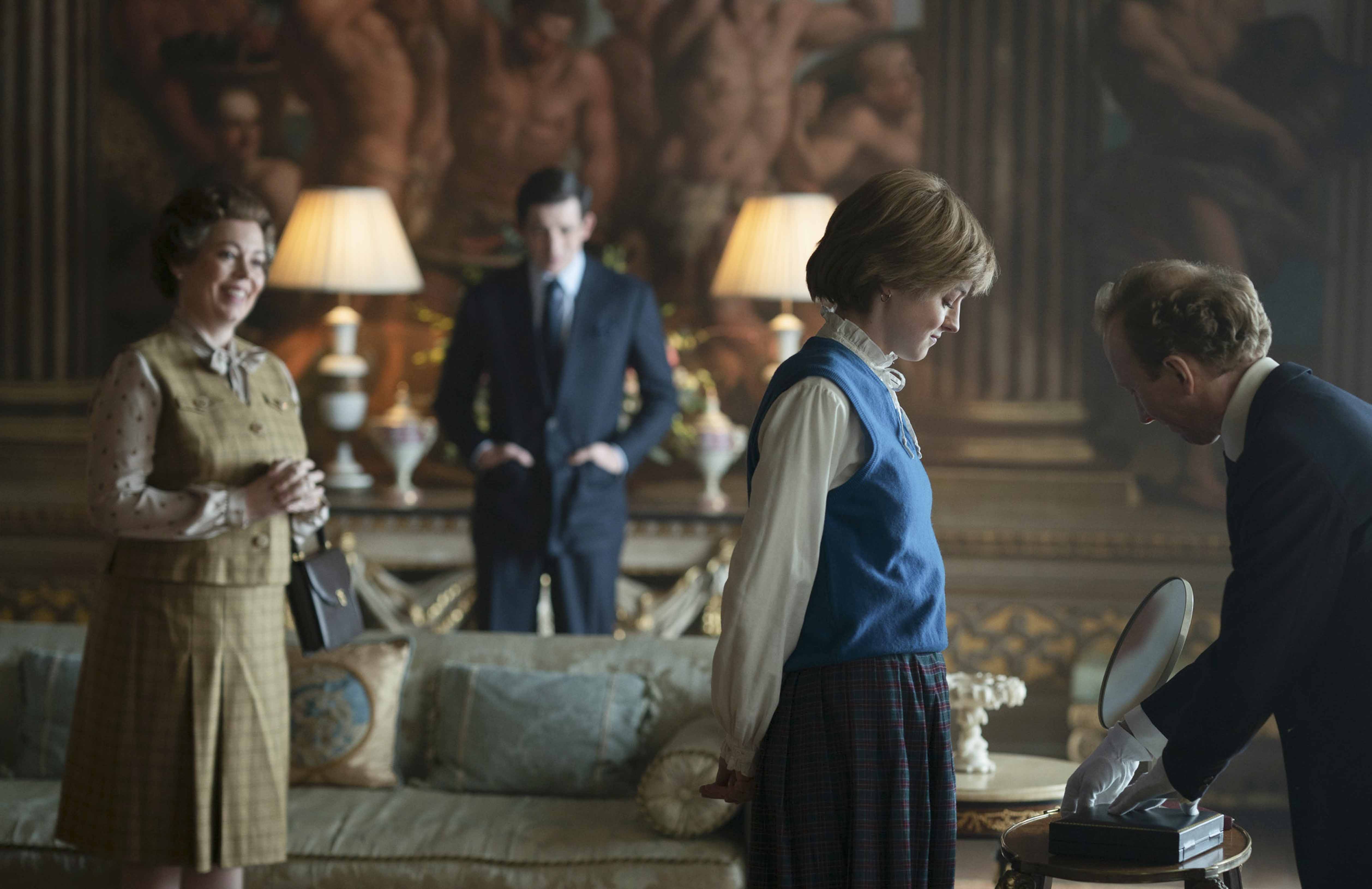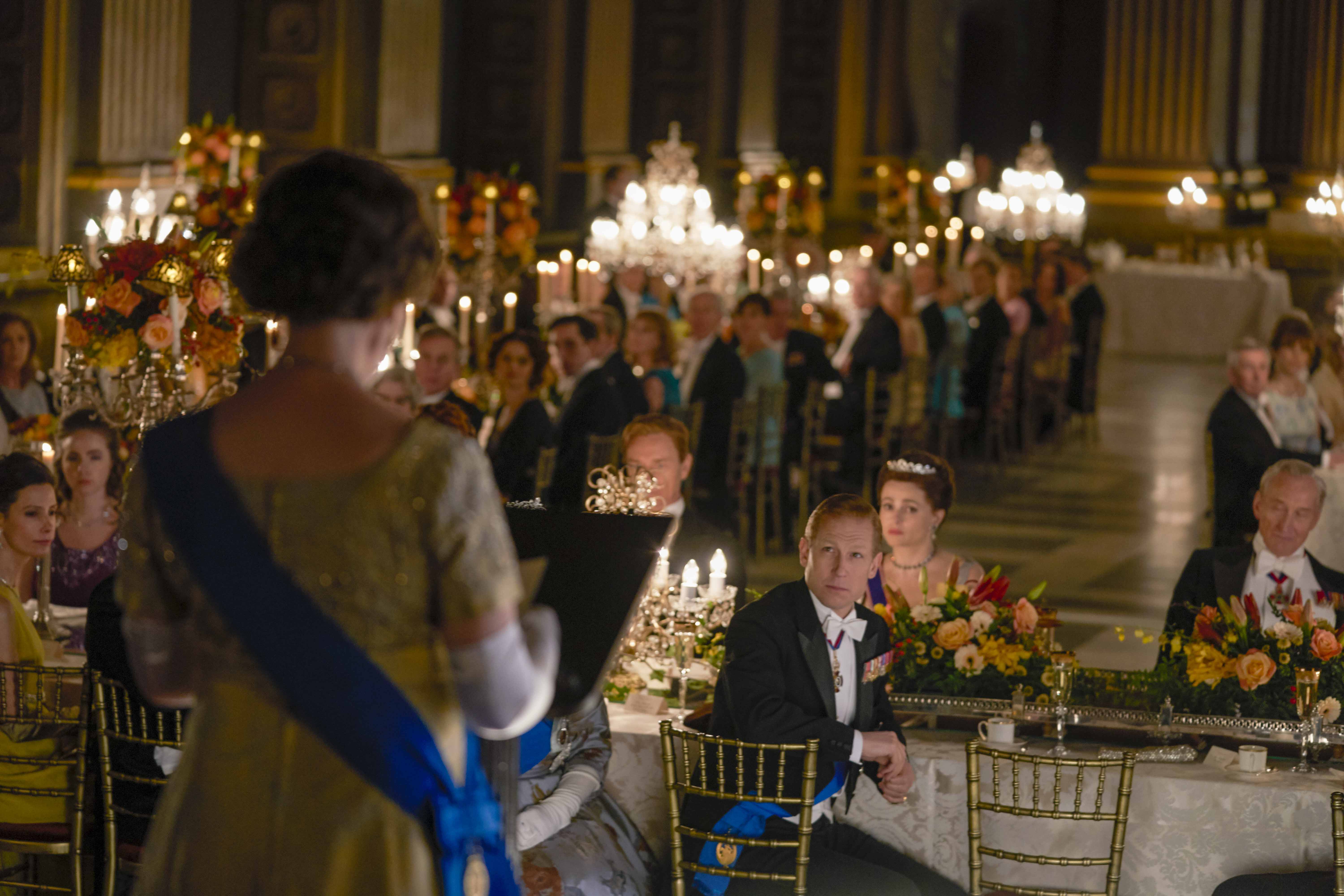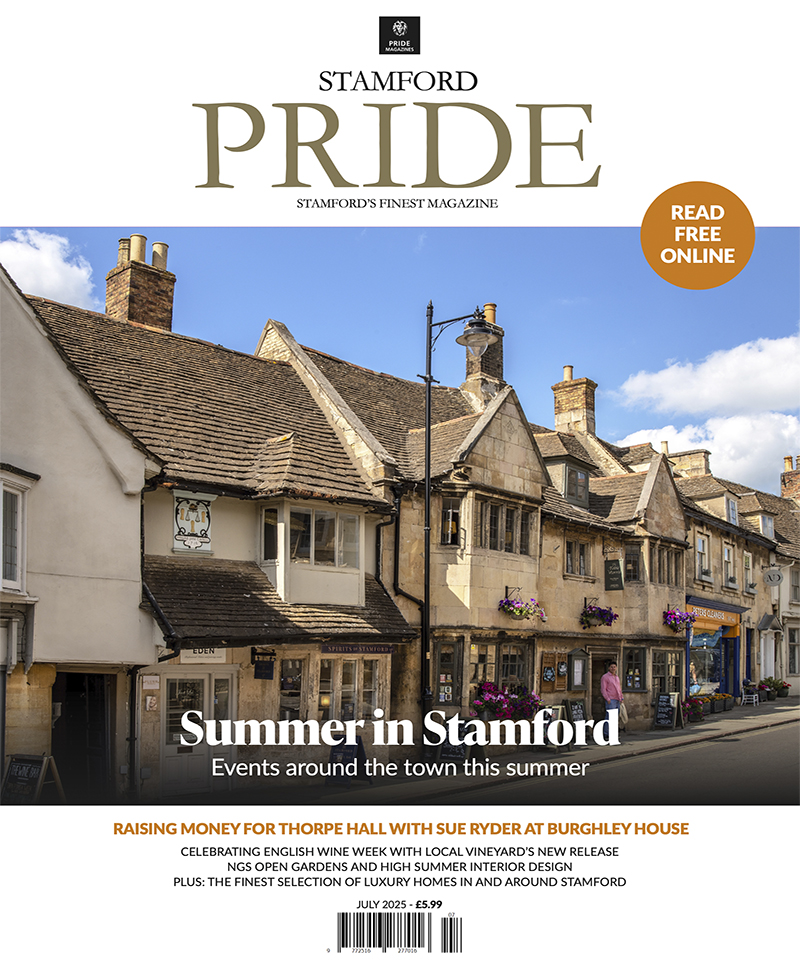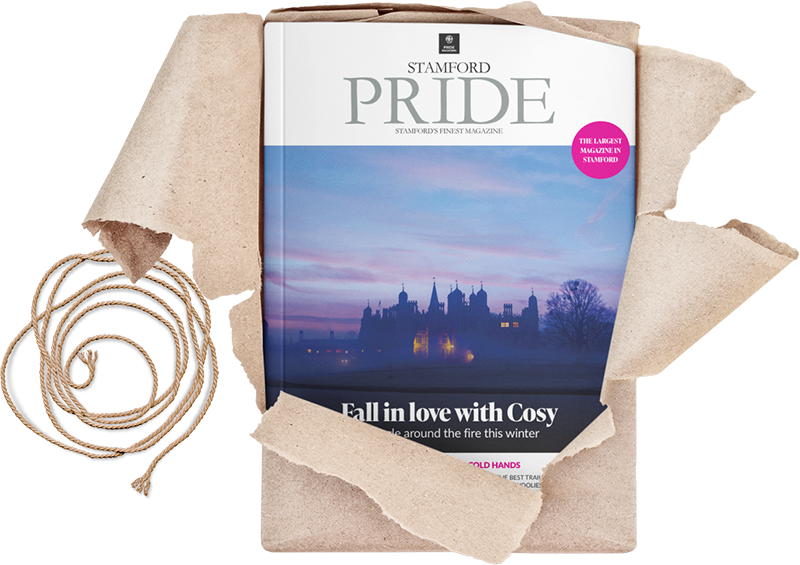
Taking The Crown
Some of the backgrounds in Netflix’s flagship drama The Crown may look as familiar as the faces themselves… and that’s because Stamford’s Burghley House and Grantham’s Belvoir Castle were just two of the preferred locations used to film this lavish series about the more turbulent events during the reign of Queen Elizabeth II…

In Shakespeare’s Henry IV, the eponymous king declares ‘Uneasy lies the head that wears a crown.’ The trials and tribulations of monarchs provided sufficient material to keep the playwright going for years. It’s little surprise; being a monarch is never dull. Our own Queen’s reign of 68 years has had its challenges, but what makes for a challenging life also makes great TV.
And one of the best series on our screens at the moment is The Crown, which over 73,000,000 households have watched since it debuted in 2016. Series four is now available to stream and if the faces are familiar, then the locations should be even more recognisable, because both Burghley House & Grantham’s Belvoir Castle make admirable representations of Windsor Castle in both series three and four of the drama. We spoke to Director Ben Caron, about what compelled him to film in the area and what the latest series has in store for viewers…
What attracted you to Belvoir Castle and latterly to Burghley House?
Both are great locations. Unfortunately, we were unable to make the schedule work for our usual Windsor visits to Belvoir Castle and therefore had to seek an alternative.
We went through a number of options with Martin Childs, Production Designer. One of the early contenders was Burghley House. Burghley is not too far from Belvoir Castle, situated in Stamford and they were very keen to be involved with the show. The interior frescos at Burghley were actually painted by the same artist as those at Windsor and once Martin visited, he loved the house and the next step was to convince production that this would be our next Windsor. It soon became everybody’s new favourite location!
When does season four take place?
Season four of The Crown starts in 1979 and goes all the way through to 1990. I’m very excited about season four because I think it’s our finest. We’ve got two characters coming into season four played by two sensational actors, and that is Margaret Thatcher – born of course in Grantham – and Lady Diana Spencer, who lived for a time in nearby Althorp, in Northamptonshire.
We see the Thatcher years and we also witness the journey of Diana. Diana goes from young adult to mother of two children, and through all the highs and lows of a marriage that ends in divorce from the Prince of Wales.
What happens during season four?
It’s jam packed. We’ve got Princess Diana, Margaret Thatcher, the Falklands, sibling rivalry, and Michael Fagan, the Palace intruder and sat on the bed of the Queen of England. Additionally, in 10 Downing Street we have rivalry between the two Heads of State; the Queen and Margaret Thatcher. It’s a relationship where you think they are going to get on and very quickly descends into difficulties between two very similar personalities.
What did you think of the scripts?
When I read our writer Peter Morgan’s scripts, there’s always a sense of, ‘oh, I know what’s coming up.’ And of course, there are the big moments in the season. There is the wedding, which everyone’s going to be excited about and there’s Thatcher. There are all the things that I remember now that I’m coming into a decade in which I was alive. But there are also the brilliant unknown stories that Peter gets his magnifying glass out and scratches beneath the surface of.
Is there a particular scene you’re really proud of?
This season I directed the opening episode and episode three. In episode one, there are a couple of scenes that really stand out for me. One, is the first time we meet Diana.
When Peter first wrote that scene it felt really mythological in the sense that there was this other worldly person that was camouflaged in her.
Then, we had this encounter with Charles, brief though it was, but it left some indelible mark on him that we would then return to later. We knew as an audience watching how important the first meeting was. I remember thinking about Baz Luhrmann’s Romeo & Juliet and specifically about that moment when they met around the fish tank. I thought about how fun it would be to stage the scene so that Diana was hiding in front of the greenery and only for a brief moment, you had this moment of eyes locking.
What were the specific challenges of this series?
With every season of The Crown, and this is season four, we always start with what we can bring that is new and different. I like to think The Crown has a very modern approach and doesn’t fall into that sort of classic period drama. The Crown season four covers the 80s, which was referred to as ‘Thatcher’s broken Britain,’ and so we were sort of interested in how we could bring a little more of that visceral reality of how Britain was at that time. We looked at trying to maybe slowly steer the season away from the slightly more fairy-tale approach in the earlier seasons and more towards the grittier version of life in the 1980s.
How does this season look different to the last?
In terms of making season four different from a camera point of view, without getting too technical, we have brought on new cameras and new lenses. We tested lots of cameras and lenses at the beginning of the season and I think our audience will still feel like they’re watching The Crown, but that it has the feeling of something that is taking us into the 1980s.
What was it like changing cast last season?
I think season three was a huge challenge for our cast. They had the unenviable task of taking the baton from previous actors in seasons one and two. Coming back for series four, though, was like welcoming back old friends. It was a challenge, and it’s daunting to think we might do the same for seasons five and six, but I think all of those actors – not just in terms of how the audience are responding to them – also looked forward to coming back to season four.
How well does Olivia represent The Queen?
I think she is brilliant. She turns up, knocks it out of the park and then goes home. I genuinely don’t know how she does it. I don’t even think she knows how she does it.
She is one of the most amazingly gifted, warm, generous people that exist in the world, and we are incredibly grateful to her on set. I think she is the matriarch on camera, and she is the matriarch on set.
What does Gillian bring to the part of Thatcher?
The role of Margaret Thatcher is such a hard character to play because there are many people that have opinions about her. She was a divisive political figure.
Gillian has a sort of razor-sharp focus. I know she has spent months and months and months trying to scrape underneath the surface of Margaret Thatcher. I think this is probably one of the hardest roles that she’s done because you’re stepping into the shoes of someone that everyone has an opinion about. Gillian’s performance is very nuanced, and it might make the audience think a little bit more about who the real Margaret Thatcher was.
Why was Emma the right person to play Diana?
When she stepped into the room, she had that amazing quality of vulnerability and strength. When we brought Emma in for the third casting session she was incredibly emotional. I remember saying to her, ‘your life is going to change now very quickly, you’re going to experience things that Diana experienced and that you should draw on that.’
I am so happy with what she has brought to the screen. I think people are going to be completely and utterly wowed by her.
How much effort is it to turn a location like Burghley or Belvoir into a royal palace?
Martin Childs and Alison Harvey are our designers. They do the most extraordinary job every season. When I arrive on set first thing in the morning and I walk in one of the rooms that they’ve set-decorated and set designed, every time it’s just ‘wow.’
They have the task of moving The Crown through the seasons without being too heavy handed with it but being representative of that time and of that era. They find things that have a trigger for us as an audience.
There are things that take us back to a visceral memory with those fabrics, colours, and props. All of these things are inherently what create the feeling of a season.
The research team too has been there since season one. They have grown, not just in the size, but also in terms of their confidence. There hasn’t been a TV show that I’ve ever worked on that has that amount of real knowledge of the subject matters that they are dealing with.
What will the reaction be to season four?
We try our best with each season and we wouldn’t let it out of the door if we didn’t think that it was the best version that it could probably be. At some point every shoot runs out of money and runs out of time, so it’s never as good as you would like it to be. I shrug when people say ‘I prefer season one or season two,’ I don’t know what that means.
Beside that, grandfathers are watching with granddaughters; mothers are watching with daughters, fathers are watching with daughters, or sons.
The Queen has been sort of central in absolutely everybody’s lives since the minute they took their first breath. The fact that she’s as central to your grandfather’s life as she is to your mother’s, as she is to your daughter’s or our son’s is extraordinary. People make sense of The Crown in individually different ways, which is still remarkable to me.






